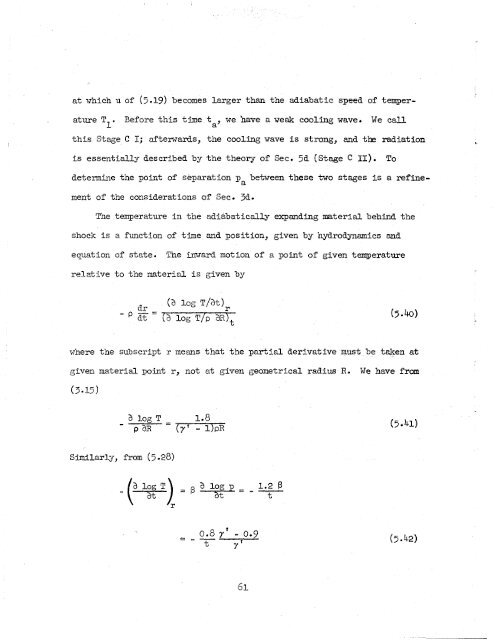Theory of the Fireball
Theory of the Fireball
Theory of the Fireball
You also want an ePaper? Increase the reach of your titles
YUMPU automatically turns print PDFs into web optimized ePapers that Google loves.
at which u <strong>of</strong> (5 .IS) becomes larger than t'le adiabatic speed <strong>of</strong> temper-<br />
ature T Before this time ta, we 'have a weak cooling wave . We call<br />
1'<br />
this Stage C I; afterwards, <strong>the</strong> cooling wave is strong, and <strong>the</strong> radiation<br />
is essentially described by <strong>the</strong> <strong>the</strong>ory <strong>of</strong> Sec. 5d (Stage C 11) . To<br />
determine tine point <strong>of</strong> separation p between <strong>the</strong>se two stages is a refinea<br />
ment <strong>of</strong> <strong>the</strong> considerations <strong>of</strong> Sec. 3d.<br />
Tne temperature in <strong>the</strong> adiiibatically expanding material behind <strong>the</strong><br />
shock is a function <strong>of</strong> time and position, given by nydrodynamics and<br />
equation <strong>of</strong> state. The imrard motion <strong>of</strong> a point <strong>of</strong> given temperature<br />
rel-ative to <strong>the</strong> material is given by<br />
tfnere <strong>the</strong> subscript r means that <strong>the</strong> partial derivative must be talcen at<br />
given material point r, not at given geometrical radius R. We have from<br />
(3.15)<br />
61
















